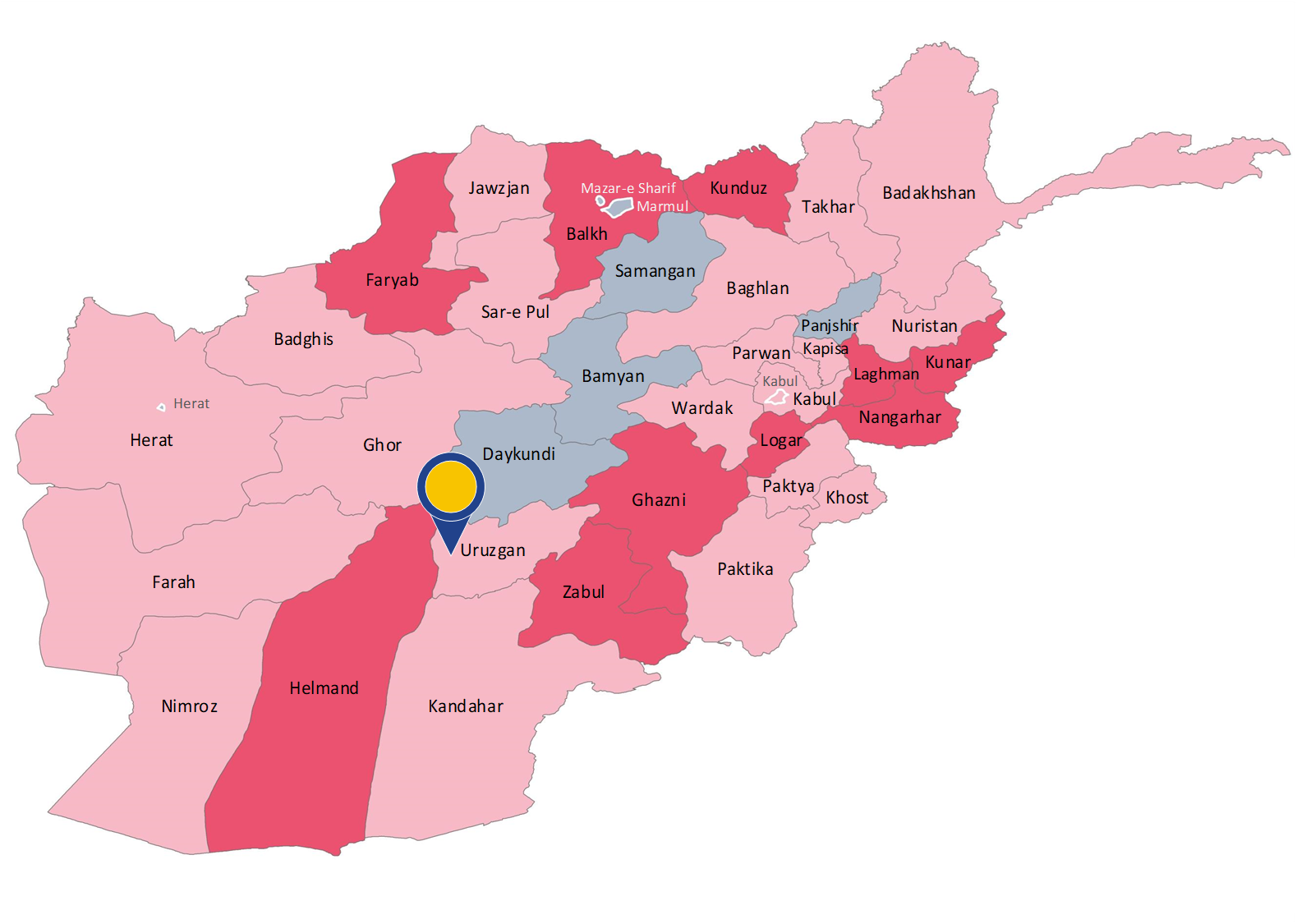|
⚠ |
|
Please note that this country guidance document has been replaced by a more recent one. The latest versions of country guidance documents are available at /country-guidance. |
Uruzgan province has a population of approximately 436 000. The main ethnic group in the province is Pashtun. Uruzgan is located in the central part of Afghanistan. It is divided into five districts and borders Daykundi, Ghazni, Zabul, Kandahar, and Helmand. The Kandahar-Uruzgan highway runs through the districts of Chora and Tirinkot. The city of Tirinkot hosts an airport with domestic scheduled passenger flights.

The Taliban are very active in all parts of the province, while government authority is very weak and limited to the provincial capital. Bases of security forces are the only government’s presence in the countryside and are often attacked. In some districts of the province, like Khas Uruzgan, Hazaras have lived in self-governed enclaves under local agreements with the Taliban. Sources also reported ISKP activity in the province, particularly in Chora district.
One district of Uruzgan province was categorised by LWJ as under Taliban control and the others as contested.
ACLED collected data on 642 violent events in the period from 1 March 2019 to 30 June 2020 (average of 9.2 incidents per week), of which 435 were coded as ‘battles’, 199 as ‘explosions/remote violence’, and eight as ‘violence against civilians’.
Examples of incidents include attacks of AGEs on security forces and the frequent use of airstrikes by US and Afghan forces against positions of Taliban. Ongoing military operations in order to clear the Kandahar-Uruzgan highway from Taliban insurgents were reported in February 2019.
UNAMA documented 145 civilian casualties (73 deaths and 72 injured) in 2019, representing 33 civilian victims per 100 000 inhabitants. This was a decrease of 16 % compared to 2018. The leading causes for the civilian casualties were ground engagements, followed by airstrikes and non-suicide IEDs.
RS ranked Uruzgan in the category of provinces where the number of civilian casualties was between 26 and 50 for the first quarter of 2020, and between 0 and 25 for the second quarter.
In the period 1 March 2019 – 30 June 2020, 4 371 persons were displaced from the province of Uruzgan, most of them relocating in the same province. In the same period, 377 persons from Kandahar province sought refuge in Uruzgan.
|
|
Looking at the indicators, it can be concluded that indiscriminate violence is taking place in the province of Uruzgan, however not at a high level and, accordingly, a higher level of individual elements is required in order to show substantial grounds for believing that a civilian, returned to the territory, would face a real risk of serious harm within the meaning of Article 15(c) QD.
|
